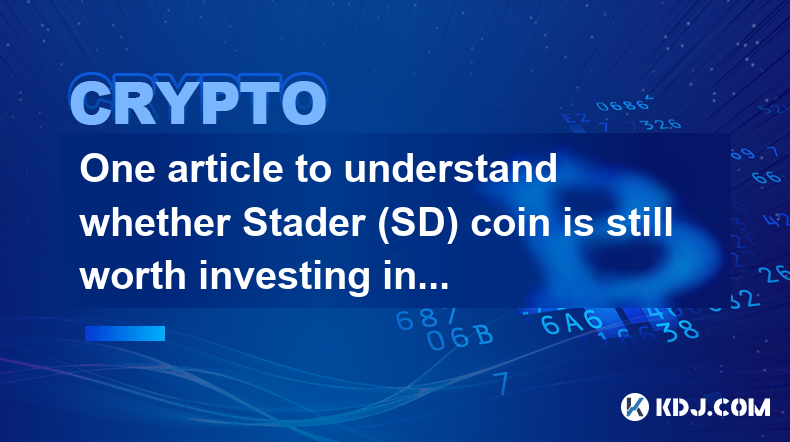-
 Bitcoin
Bitcoin $96,928.4510
-0.22% -
 Ethereum
Ethereum $1,811.5848
-1.37% -
 Tether USDt
Tether USDt $1.0002
0.02% -
 XRP
XRP $2.1226
-1.92% -
 BNB
BNB $601.8969
-0.46% -
 Solana
Solana $147.4113
-0.65% -
 USDC
USDC $0.9999
0.00% -
 Dogecoin
Dogecoin $0.1722
-0.84% -
 Cardano
Cardano $0.6715
-1.81% -
 TRON
TRON $0.2492
1.72% -
 Sui
Sui $3.3320
-1.61% -
 Chainlink
Chainlink $13.8556
-0.42% -
 Avalanche
Avalanche $19.5435
-3.02% -
 UNUS SED LEO
UNUS SED LEO $8.8164
1.03% -
 Stellar
Stellar $0.2599
-1.05% -
 Bitcoin Cash
Bitcoin Cash $384.1968
1.59% -
 Shiba Inu
Shiba Inu $0.0...01276
-0.79% -
 Toncoin
Toncoin $3.0066
-0.77% -
 Hedera
Hedera $0.1753
-1.07% -
 Hyperliquid
Hyperliquid $20.9956
-0.32% -
 Litecoin
Litecoin $90.3406
-2.85% -
 Polkadot
Polkadot $3.9781
-0.24% -
 Dai
Dai $1.0001
0.00% -
 Monero
Monero $281.6167
-1.97% -
 Bitget Token
Bitget Token $4.2281
-2.48% -
 Ethena USDe
Ethena USDe $1.0007
0.03% -
 Pi
Pi $0.5885
1.41% -
 Pepe
Pepe $0.0...08242
2.27% -
 Bittensor
Bittensor $365.3967
-3.93% -
 Uniswap
Uniswap $4.8535
-3.19%
One article to understand whether Stader (SD) coin is still worth investing in now
Stader Labs, a decentralized staking infrastructure provider, utilizes its SD token for staking, governance, and transaction fees, with the ecosystem's strength being influenced by market share, partnerships, and security audits.
Dec 31, 2024 at 12:53 pm

Key Points:
- Understanding Stader Labs and the SD token
- Market outlook and price analysis of SD
- Assessing the strength of the Stader ecosystem
- Exploring potential risks and uncertainties
- Determining the potential for returns on SD investment
Understanding Stader Labs and the SD Token
Stader Labs is a decentralized staking infrastructure provider that enables users to stake their crypto assets across multiple protocols seamlessly. The platform offers a non-custodial, multichain staking service that allows users to maximize their staking rewards while maintaining control over their funds.
The SD token is the native utility token of the Stader ecosystem. Its primary utilities include:
- Staking: SD token holders can stake their tokens to earn rewards for securing the Stader network.
- Governance: SD holders participate in the governance of the Stader protocol by voting on protocol upgrades and other community proposals.
- Fees: SD tokens are used to pay transaction fees on the Stader platform.
Market Outlook and Price Analysis of SD
The SD token has experienced significant price fluctuations since its launch in 2022. The token's all-time high was approximately $9.50 in November 2022, while its current price is around $2.20. The token's price is influenced by a number of factors, including the overall market conditions, the performance of the Stader platform, and the supply and demand dynamics of the SD token.
Assessing the Strength of the Stader Ecosystem
The strength of the Stader ecosystem is a crucial factor in determining the investment potential of the SD token. Key indicators of the ecosystem's health include:
- Market share: Stader Labs holds a significant market share in the liquid staking market, with over $1 billion in assets staked across its platform.
- Team and partnerships: The Stader team is composed of experienced professionals with a strong track record in the blockchain industry. Stader Labs has also established partnerships with leading cryptocurrency exchanges and protocols.
- Protocol security: The Stader protocol undergoes regular audits to ensure its security and reliability. The platform utilizes a multi-custodian model to safeguard user assets.
Exploring Potential Risks and Uncertainties
Like all investments, SD token investments carry potential risks and uncertainties:
- Market volatility: The cryptocurrency market is volatile, and the price of SD could fluctuate significantly.
- Competition: Stader Labs faces competition from other staking providers, including Lido Finance and Rocket Pool.
- Regulatory uncertainty: The regulatory landscape for cryptocurrency is evolving, and changes in regulation could impact the Stader ecosystem.
Determining the Potential for Returns on SD Investment
The potential for returns on SD investments depends on a number of factors:
- Market conditions: The overall market conditions will play a significant role in determining the price performance of SD.
- Platform adoption: The adoption and usage of the Stader platform will directly impact the demand for the SD token.
- Staking rewards: The staking rewards generated by the Stader platform will influence the profitability of SD staking.
FAQs Related to Keywords
What is the purpose of the SD token?
The SD token is the native utility token of the Stader ecosystem. Its primary utilities include staking, governance, and paying transaction fees on the Stader platform.
What are the key factors to consider when assessing the potential of SD?
Key factors to consider include the health of the Stader ecosystem, the market outlook, potential risks and uncertainties, and the potential for returns on investment.
What are the potential risks associated with SD investments?
Potential risks include market volatility, competition, and regulatory uncertainty.
Is SD a good long-term investment?
The potential for long-term investment returns depends on a number of factors, including market conditions, platform adoption, and staking rewards.
Disclaimer:info@kdj.com
The information provided is not trading advice. kdj.com does not assume any responsibility for any investments made based on the information provided in this article. Cryptocurrencies are highly volatile and it is highly recommended that you invest with caution after thorough research!
If you believe that the content used on this website infringes your copyright, please contact us immediately (info@kdj.com) and we will delete it promptly.
- Avalanche (AVAX) continues to impress in the blockchain space, trading at $19.45 with an intriguing lineup of developments.
- 2025-05-08 08:55:13
- Stripe's AI Revolution: A Dual Play in Payments and Cryptocurrency
- 2025-05-08 08:55:13
- Dogecoin (DOGE) Price Prediction: Diamond Bottom Reversal Pattern Hints at a Potential Breakout to $0.35
- 2025-05-08 08:50:13
- Bitcoin (BTC) price soars to US$96,446 on strong institutional buying of spot Bitcoin exchange-traded funds (ETFs).
- 2025-05-08 08:50:13
- Bitcoin (BTC) price prediction: BTC to soar to US$100,000
- 2025-05-08 08:45:12
- Doodles Launches Its $DOOD Token on Solana, Binance Futures Also Lists Perpetual Contracts
- 2025-05-08 08:45:12
Related knowledge

Is Ethereum Layer2 fee low? How to use it cheaper?
May 08,2025 at 03:56am
The question of whether Ethereum Layer 2 solutions offer lower fees and how to use them more economically is a topic of great interest within the cryptocurrency community. Ethereum's Layer 2 solutions have been developed to address the high transaction fees and scalability issues associated with the main Ethereum network. In this article, we will delve ...

How to calculate Ethereum network fee? How to reduce transaction costs?
May 08,2025 at 02:15am
Understanding and managing Ethereum network fees is crucial for anyone involved in transactions on the Ethereum blockchain. The network fee, also known as gas fee, is the amount of Ether (ETH) required to successfully conduct a transaction or execute a smart contract on the Ethereum network. Calculating these fees and finding ways to reduce them can sig...

What is Ethereum Gas Fee? How to optimize Gas Fee to save costs?
May 08,2025 at 03:43am
Ethereum gas fees are a crucial aspect of interacting with the Ethereum blockchain. Understanding and optimizing these fees can significantly impact the cost-effectiveness of transactions and smart contract interactions. In this article, we will delve into what Ethereum gas fees are, how they are calculated, and provide detailed strategies for optimizin...

How to perform MOVE cross-chain transfer? What to do if the gas fee is too high?
May 07,2025 at 08:03pm
Introduction to MOVE Cross-Chain TransferCross-chain transfers have become an essential part of the cryptocurrency ecosystem, allowing users to move assets between different blockchain networks. One of the popular protocols for achieving this is the MOVE cross-chain transfer. This article will guide you through the process of performing a MOVE cross-cha...

How is the DYDX liquidation price calculated? How is the forced liquidation mechanism?
May 08,2025 at 06:49am
The DYDX liquidation price and the forced liquidation mechanism are crucial aspects of trading on the dYdX platform, a decentralized exchange that allows users to trade perpetual contracts. Understanding these concepts is essential for managing risk and maximizing potential returns. In this article, we will delve into the details of how the DYDX liquida...

Does DYDX support cross-chain? Is the transfer speed fast?
May 07,2025 at 05:56pm
Introduction to DYDXDYDX is a leading decentralized exchange (DEX) that primarily operates on the Ethereum blockchain. It is known for its advanced trading features, including perpetual contracts and margin trading. A common question among users is whether DYDX supports cross-chain functionality and how fast the transfer speeds are. In this article, we ...

Is Ethereum Layer2 fee low? How to use it cheaper?
May 08,2025 at 03:56am
The question of whether Ethereum Layer 2 solutions offer lower fees and how to use them more economically is a topic of great interest within the cryptocurrency community. Ethereum's Layer 2 solutions have been developed to address the high transaction fees and scalability issues associated with the main Ethereum network. In this article, we will delve ...

How to calculate Ethereum network fee? How to reduce transaction costs?
May 08,2025 at 02:15am
Understanding and managing Ethereum network fees is crucial for anyone involved in transactions on the Ethereum blockchain. The network fee, also known as gas fee, is the amount of Ether (ETH) required to successfully conduct a transaction or execute a smart contract on the Ethereum network. Calculating these fees and finding ways to reduce them can sig...

What is Ethereum Gas Fee? How to optimize Gas Fee to save costs?
May 08,2025 at 03:43am
Ethereum gas fees are a crucial aspect of interacting with the Ethereum blockchain. Understanding and optimizing these fees can significantly impact the cost-effectiveness of transactions and smart contract interactions. In this article, we will delve into what Ethereum gas fees are, how they are calculated, and provide detailed strategies for optimizin...

How to perform MOVE cross-chain transfer? What to do if the gas fee is too high?
May 07,2025 at 08:03pm
Introduction to MOVE Cross-Chain TransferCross-chain transfers have become an essential part of the cryptocurrency ecosystem, allowing users to move assets between different blockchain networks. One of the popular protocols for achieving this is the MOVE cross-chain transfer. This article will guide you through the process of performing a MOVE cross-cha...

How is the DYDX liquidation price calculated? How is the forced liquidation mechanism?
May 08,2025 at 06:49am
The DYDX liquidation price and the forced liquidation mechanism are crucial aspects of trading on the dYdX platform, a decentralized exchange that allows users to trade perpetual contracts. Understanding these concepts is essential for managing risk and maximizing potential returns. In this article, we will delve into the details of how the DYDX liquida...

Does DYDX support cross-chain? Is the transfer speed fast?
May 07,2025 at 05:56pm
Introduction to DYDXDYDX is a leading decentralized exchange (DEX) that primarily operates on the Ethereum blockchain. It is known for its advanced trading features, including perpetual contracts and margin trading. A common question among users is whether DYDX supports cross-chain functionality and how fast the transfer speeds are. In this article, we ...
See all articles





















































































